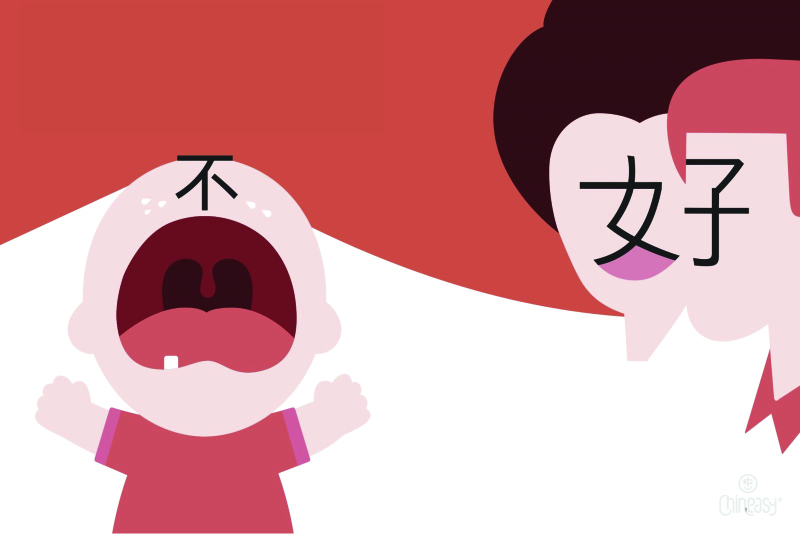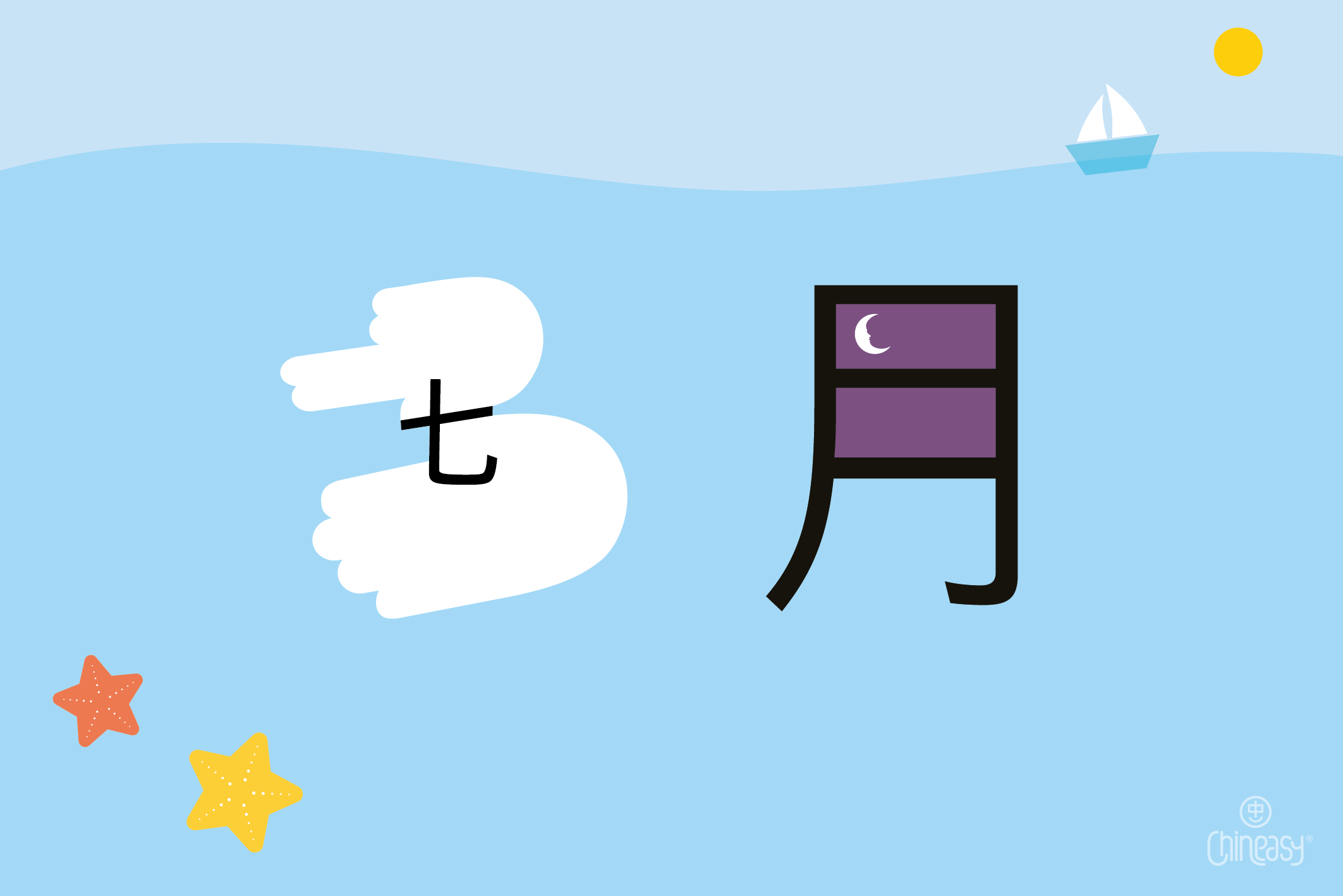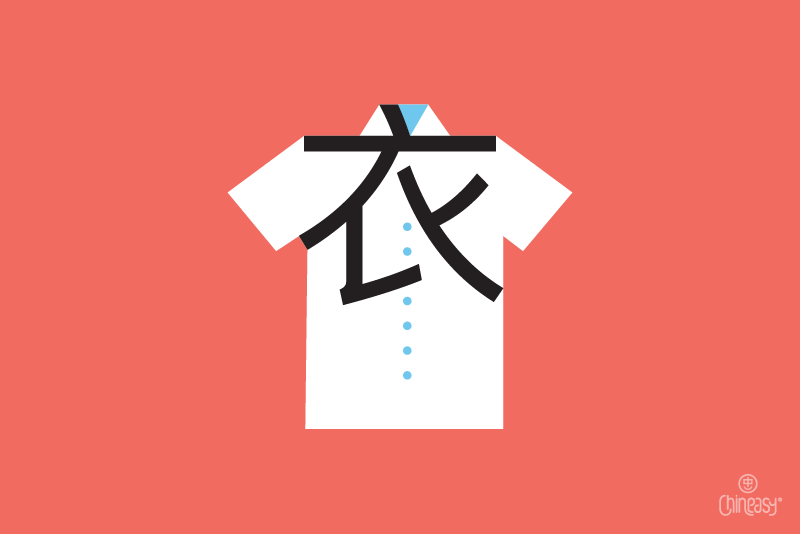Welcome back to the world of Chinese homophones! If you found our previous post: 10 Chinese Homophones You Don’t Want to Get Wrong helpful, today’s exploration will surely pique your interest.
If you haven’t read it yet, start with our previous article to really understand Chinese tones and homophones. One of the reasons there are so many homophones in Chinese is because of these tones.
Now, let’s delve deeper. In this article, we focus on two-syllable Chinese homophones, a step up from the one-syllable words we discussed previously.
Why two-syllable words?
The reason is simple: most contemporary Chinese words are two-syllable constructs, making them essential for day-to-day communication.
We’ll examine ten pairs of such homophones, aiming not only to highlight their subtle pronunciation differences but also to demonstrate how they’re used in everyday contexts.
Ready to double the fun and expand your Chinese skills? Let’s get started!
Plum 李子 vs Chestnut 栗子
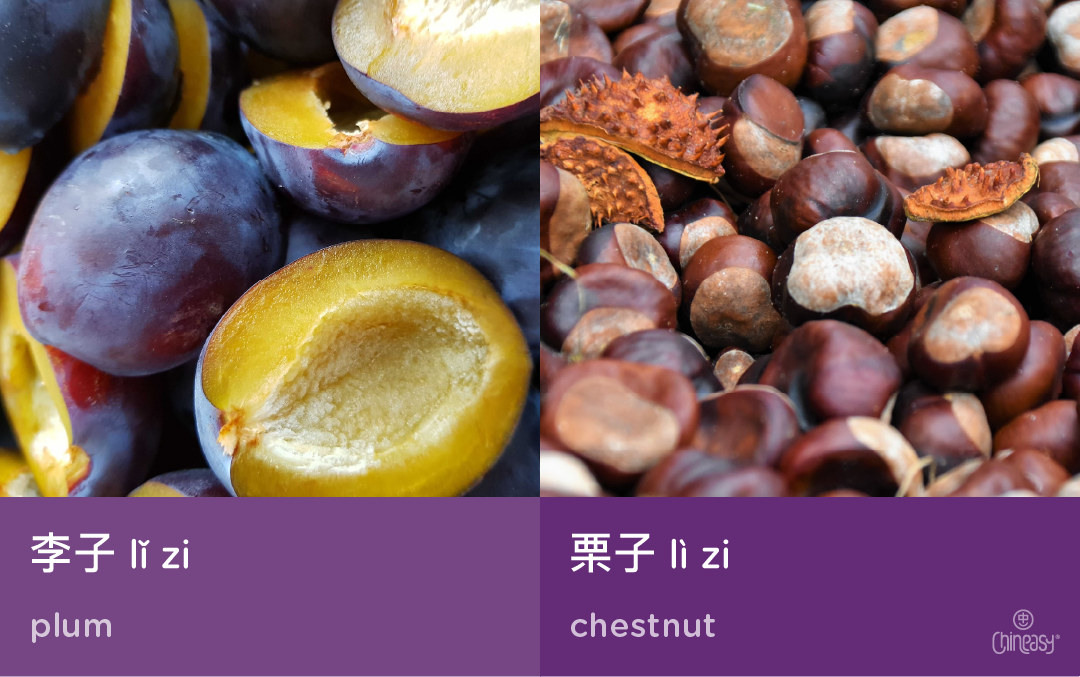
Imagine you’re in China, standing at a street vendor’s stall. You ask for plums, but you get chestnuts instead. Oops! This mix-up might happen if you don’t say 李子 (lǐ zi; plum) correctly.
The first character 李 (lǐ) means “plum,” and it’s said with the third tone, where your voice remains low. The second character 子 (zi) is just a noun suffix and is pronounced in a light, neutral tone without much emphasis.
However, “chestnut” in Chinese is 栗子 (lì zi). These two words both end with 子 (zi), but the first character 栗 (lì) has a completely different tone – the fourth tone. This one is sharp and falls like you’re firmly stating a fact.
So, to say to the vendor you’d like some plums, you would say:
我要一些李子 (wǒ yào yīxiē lǐzi) – I want some plums.
And if you want to buy some chestnuts instead, the sentence is:
我要一些栗子 (wǒ yào yīxiē lìzi) – I want some chestnuts.
Quilt 被子 vs Cup 杯子
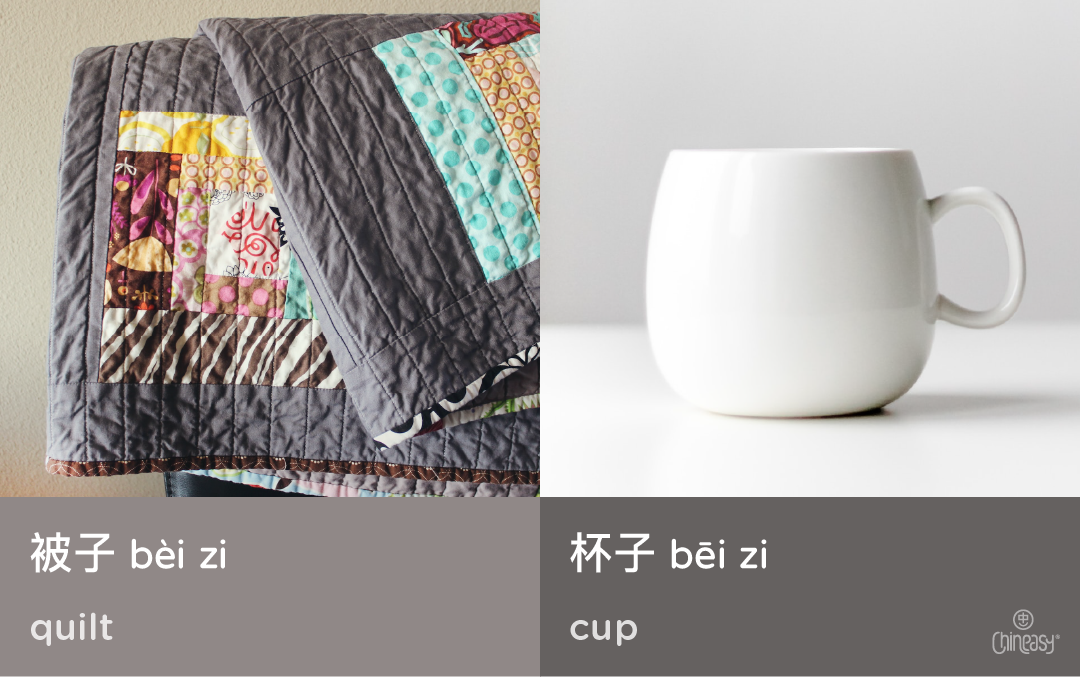
Now, you’re at home, ready for a cozy nap. You ask your Chinese roommate for a “quilt” (被子; bèi zi) because it’s chilly, but instead, you get handed a “cup” (杯子; bēi zi). Quite the mix-up, right?
In Chinese, 被子 (bèi zi; quilt) uses the fourth tone for 被 (bèi), which has a strong, decisive fall. The second character, 子 (zi), is again a neutral-toned noun suffix, just like in our previous example.
However, 杯子 (bēi zi; cup) starts with 杯 (bēi) in the first tone – high, flat, and steady. The ending is the same, 子 (zi), with a neutral tone.
So, if you want to ask for a quilt, you’d say:
可以给我一条被子吗? (kěyǐ gěi wǒ yī-tiáo bèizi ma) – Can you give me a quilt?
(Traditional Chinese: 可以給我一條被子嗎?)
And if you’re asking for a cup, it’s:
可以给我一个杯子吗? (kěyǐ gěi wǒ yī-ge bēizi ma) – Can you give me a cup?
(Traditional Chinese: 可以給我一個杯子嗎?)
Dumpling 水饺 vs To Sleep 睡觉

In this scenario with your Chinese roommate, dinner plans get a bit tangled due to a pronunciation mix-up. You’re craving his delicious dumplings (水饺; shuǐ jiǎo), but what you end up saying sounds more like sleep (睡觉; shuì jiào)!
Dumpling, or more specifically “boiled dumpling” in Chinese, 水饺 (shuǐ jiǎo), involves two third tones. However, due to the Chinese tone change rule, when two third tones are together, the first one changes to a second tone, becoming a rising tone. So, it’s pronounced with a rising tone for 水 (shuí) and then a low, flat tone for 饺 (jiǎo).
But, 睡觉 (shuì jiào), the word for “to sleep,” is simpler, combining two fourth tones. Here, there’s no need for tone changes. The word uses a sharp, decisive fall for 睡 (shuì) and another strong downward intonation for 觉 (jiào).
So, when you say:
我要水饺 (wǒ yào shuǐ jiǎo) – I want dumplings.
(Traditional Chinese: 我要水餃)
Make sure not to mix it up with:
我要睡觉 (wǒ yào shuì jiào) – I want to sleep.
(Traditional Chinese: 我要睡覺)
Get the tones right, and you’ll be enjoying dumplings instead of heading off to bed early!
Boss 老板 vs Partner 老伴
In a typical office scene in China, it’s customary to refer to your boss as “boss” rather than by their first name.
The term for “boss” in Chinese is 老板 (lǎo bǎn). However, a slight mispronunciation can lead to a potentially awkward situation.
Imagine greeting your boss in the hallway but accidentally saying 老伴 (lǎo bàn), which translates to “partner,” typically used to refer to a spouse!
老板 (lǎo bǎn) consists of two third tones. Do you remember the tone-change rule applies to the word 水饺 (shuǐ jiǎo; dumpling)? The Chinese tone-change rule also comes into play when pronouncing 老板 correctly.
The first character, 老 (lǎo), shifts to a second tone, becoming a rising tone. The second character, 板 (bǎn), retains a low tone.
In contrast, 老伴 (lǎo bàn), meaning “partner” or “spouse,” uses the third tone for 老 (lǎo) and combines it with a fourth tone in 伴 (bàn), giving a falling intonation.
So, when you greet your boss in the morning, make sure to say:
早!老板。 (zǎo lǎobǎn) – Morning! boss.
(Traditional Chinese: 早, 老闆。)
And avoid confusing it with:
早!老伴。 (zǎo lǎobàn) – Morning! My dear.
(Traditional Chinese: 早, 老伴。)
Getting these right can save you from a potentially comical yet embarrassing mix-up at work!
Ask me 问我 vs Kiss me 吻我
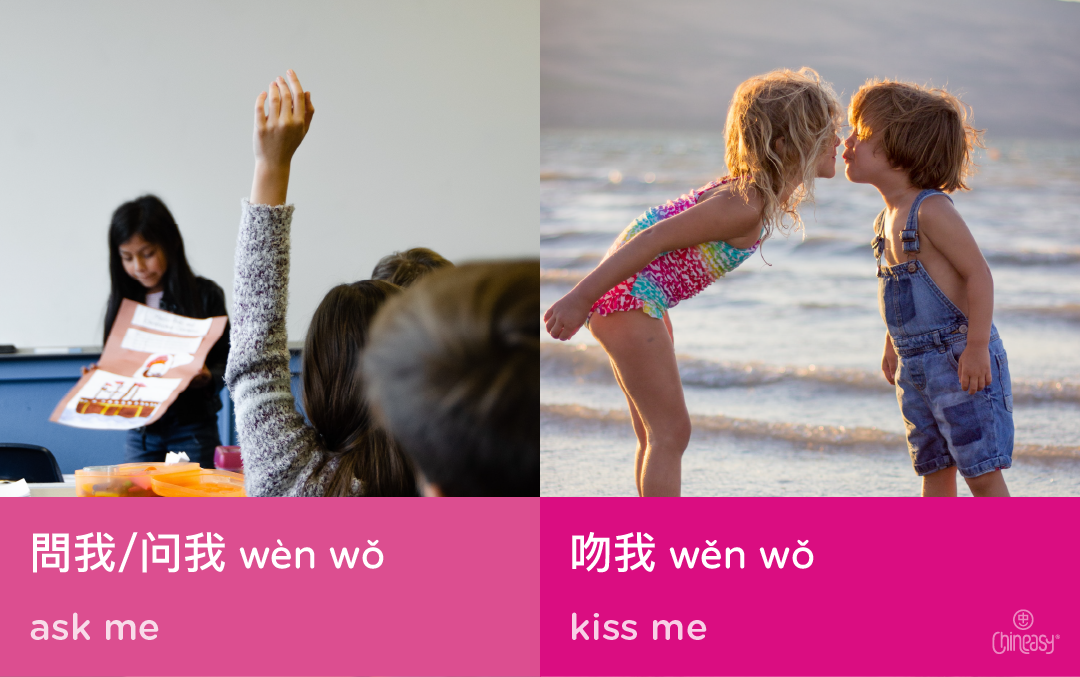
Back in the office, imagine you’ve just finished a presentation and are opening the floor for a Q&A session.
You want to encourage your Chinese colleagues to ask you any questions, which in Chinese is 问我 (wèn wǒ), meaning “ask me.”
However, a slight misstep in your Chinese tones, and you might end up saying 吻我 (wěn wǒ), which translates to “kiss me.”
Now, that would leave your colleagues quite puzzled about how to respond!
In 问我 (wèn wǒ; ask me), 问 (wèn) means “to ask” and is pronounced with the fourth tone – a strong, clear fall. The second character, 我 (wǒ), meaning “I” or “me,” is pronounced with the third tone, a low-flat tone.
On the other hand, “kiss me” (吻我; wěn wǒ) introduces the tone-change rule again. While 吻 (wěn), meaning “to kiss,” also starts as a third tone, it changes to a second tone when followed by another third tone, becoming a rising tone. So, 吻我 is pronounced with a rising tone for 吻 (wén) and a low, flat tone for 我 (wǒ).
So, when you say:
欢迎大家问我 (huānyíng dàjiā wèn wǒ) – Everyone is welcome to ask me.
(Traditional Chinese: 歡迎大家問我)
Ensure it doesn’t come out as:
欢迎大家吻我 (huānyíng dàjiā wěn wǒ) – Everyone is welcome to kiss me.
(Traditional Chinese: 歡迎大家吻我)
Mastering this subtle difference will keep your office interactions professional and on point!
Chinese 汉语 vs Korean 韩语
In the office tea room, you’re proudly talking about your proficiency in “Chinese.”
However, a slip in tone while trying to say 汉语 (hàn yǔ), the word for “Chinese language,” leads you to accidentally say 韩语 (hán yǔ), which means “Korean language.”
Your colleague, a recent K-pop fan, is thrilled and asks you to teach some Korean. Now, you’re left bewildered by their reaction, not realizing the linguistic mix-up you created in the first place.
Let’s break down the words:
- 汉 (hàn) refers to the “Han” ethnicity, which is the majority ethnic group in China. It’s also used to represent things related to Chinese culture.
- 语 (yǔ) means “language.” It’s a common suffix for the names of languages.
- 韩 (hán) refers to “Korea.”
So, the “Chinese language” is 汉语 (hàn yǔ) – a combination of a fourth tone and a third tone.
In contrast, the “Korean language” is 韩语 (hán yǔ). The first character, 韩, is in the second tone, rising, and the second character, 语, is pronounced in the third tone.
Therefore, when you say:
我的汉语很好 (wǒde hànyǔ hěn hǎo) – My Chinese is good.
(Traditional Chinese: 我的漢語很好)
Make sure not to confuse it with:
我的韩语很好 (wǒde hányǔ hěn hǎo) – My Korean is good.
(Traditional Chinese: 我的韓語很好)
Paying attention to these tonal differences will ensure you’re boasting about the right language skills!
Taiwanese 台语 vs Thai 泰语
Another common language mix-up can happen between 台语 (tái yǔ), meaning “Taiwanese language,” and 泰语 (tài yǔ), meaning “Thai language.”
台语 (tái yǔ) combines 台, which refers to “Taiwan” in this context, with 语, meaning “language.” In this pair, 台 (tái) is pronounced with the second tone, which rises, and 语 (yǔ) in the third tone.
泰语 (tài yǔ) has 泰 (tài), indicating “Thailand,” paired with 语 (yǔ; language). Here, 泰 (tài) uses the fourth tone, a sharp and decisive fall, differing from 台 (tái) in the rising tone.
So when you say:
我会说台语 (Wǒ huì shuō táiyǔ) – I can speak Taiwanese.
(Traditional Chinese: 我會說台語)
Ensure it’s not confused with:
我会说泰语 (Wǒ huì shuō tàiyǔ) – I can speak Thai.
(Traditional Chinese: 我會說泰語)
Eye 眼睛 vs Eyeglasses 眼镜
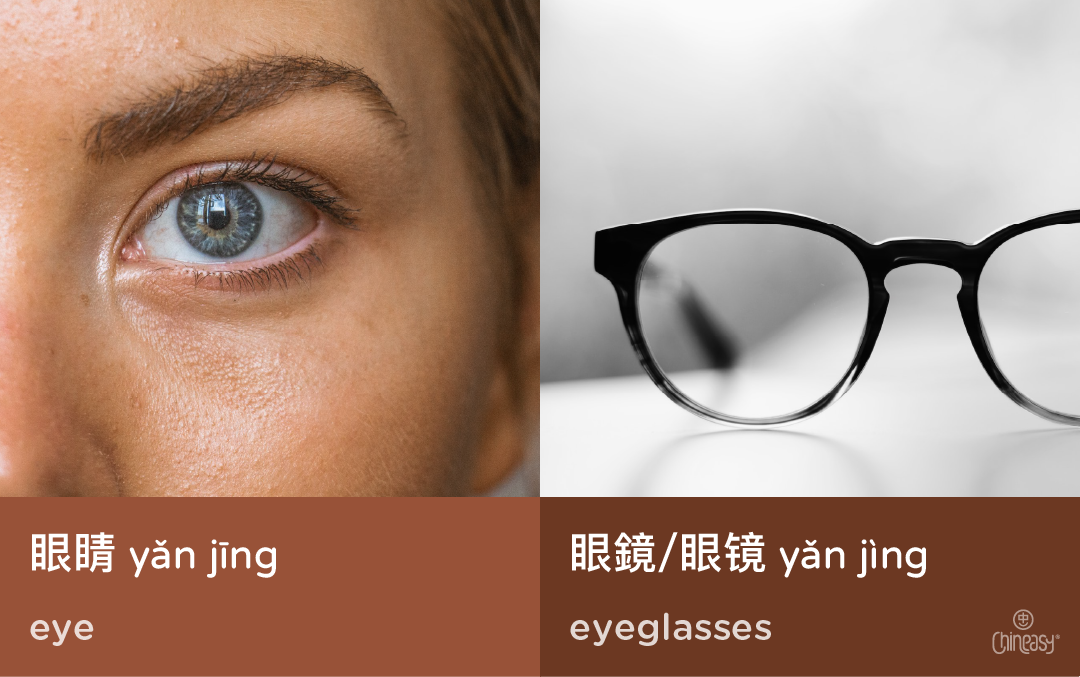
At the eye doctor’s, a slight mix-up in pronunciation can lead to a humorous misunderstanding.
You’re trying to explain that your eyes hurt, but you accidentally end up suggesting that your eyeglasses are where the pain is because of the wrong Chinese pronunciation you used.
眼睛 (yǎn jīng), meaning “eye,” combines 眼 (yǎn), which means “eye,” and 睛 (jīng), a word often used in reference to eyes or sight in compound words.
眼镜 (yǎn jìng), meaning “eyeglasses,” also starts with 眼 (yǎn) for “eye,” but it ends with 镜 (jìng), meaning “mirror” or “lens,” commonly used in words related to reflective surfaces or glasses.
So, when you tell your doctor:
我的眼睛很痛 (wǒde yǎnjīng hěn tòng) – My eyes are very painful.
Make sure not to mix it up with:
我的眼镜很痛 (wǒde yǎnjìng hěn tòng) – My eyeglasses are very painful.
(Traditional Chinese: 我的眼鏡很痛)
The latter doesn’t quite make sense in reality. Knowing the difference between 眼睛 (eyes; yǎn jīng) and 眼镜 (eyeglasses; yǎn jìng) – especially the tone difference in each’s second syllable – is key to clear communication at the doctor’s office!
Buyer 买家 vs Seller 卖家
In a casual conversation with your doctor, you’re trying to explain your profession. You intend to say you’re a “buyer,” which in Chinese is 买家 (mǎi jiā).
However, a small slip in pronunciation, and you might accidentally claim to be a “seller” or 卖家 (mài jiā). No wonder the doctor looks puzzled and starts inquiring about the products you sell!
买家 (mǎi jiā), meaning “buyer,” combines 买 (mǎi), which means “to buy,” pronounced with the third tone, where the pitch is low and flat, with 家 (jiā), an occupation suffix in this context, pronounced with the first tone, high and level.
卖家 (mài jiā), meaning “seller,” uses 卖 (mài) for “to sell,” pronounced with the fourth tone, a sharp and decisive fall, and 家 (jiā), again in the first tone.
So, when you want to express:
我是买家 (wǒ shì mǎijiā) – I’m (a) buyer.
(Traditional Chinese: 我是買家)
Ensure it’s not mistaken for:
我是卖家 (wǒ shì màijiā) – I’m (a) seller.
(Traditional Chinese: 我是賣家)
Understanding and pronouncing these terms correctly will help you avoid such mix-ups and clearly convey your occupation!
Beijing 北京 vs Background 背景
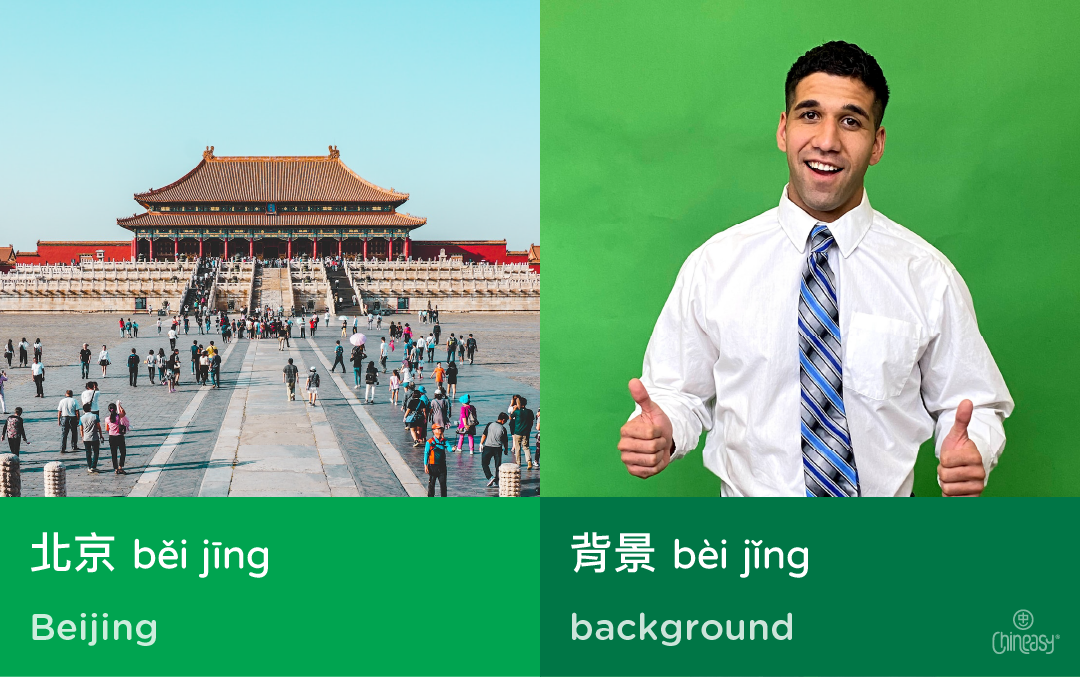
After clarifying your profession as a 买家 (mǎi jiā; buyer), you excitedly start talking about your holiday plans with the doctor.
You intend to share that you’re visiting “Beijing,” which in Chinese is 北京 (běijīng). However, a little mix-up in pronunciation, and suddenly you’re talking about heading to a “background’ or 背景 (bèijǐng)!
北京 (běi jīng), the name of China’s capital city, combines 北 (běi), meaning “north,” in the third tone, where your voice remains low, with 京 (jīng), meaning “capital,” in the first tone, high and steady.
背景 (bèi jǐng), meaning “background,” starts with 背 (bèi), meaning “back” or “behind,” in the fourth tone, which is a sharp and decisive fall, and ends with 景 (jǐng), meaning “scene” or “view,” in the third tone.
When you say:
我要去北京 (wǒ yào qù běijīng) – I’m going to Beijing
Make sure not to confuse it with:
我要去背景 (wǒ yào qù bèijǐng) – I’m going to background.
While the latter might make for an amusing story, it certainly doesn’t make sense in real life! The clear pronunciation will ensure your holiday plans are understood correctly.
And that’s our exploration of ten common two-syllable Chinese homophones! From everyday purchases to travel plans, understanding the tone difference between each of the ten pairs above is key to effective communication.
Remember, consistent practice is your pathway to success. Regularly rehearse these homophones and their example sentences (but skip the nonsensical ones!) to make accurate Chinese pronunciation second nature to you!
